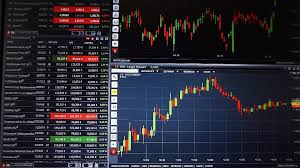The Art of Currency Trading A Comprehensive Guide to Forex Success

The Art of Currency Trading: A Comprehensive Guide to Forex Success
Currency trading, or forex trading, is an exciting and dynamic financial market that attracts traders from all over the globe. With a daily trading volume exceeding $6 trillion, the forex market offers immense opportunities for profit. Whether you are a seasoned investor or a newcomer looking to make your mark, understanding the basics and intricacies of forex trading is essential. In this guide, we will delve deep into the world of forex trading, covering strategies, tips, and valuable insights. We will also explore currency trading forex Forex Brokers in Kuwait and their importance in the trading ecosystem.
Understanding the Forex Market
The foreign exchange market, commonly known as forex (or FX), is a decentralized marketplace where currencies are traded. Unlike stock markets, forex operates 24 hours a day, five days a week, allowing traders to engage in trading whenever they choose. The value of currencies fluctuates based on various factors, including economic indicators, interest rates, political events, and market sentiment.
How Currency Trading Works
In currency trading, you buy one currency while simultaneously selling another. These transactions occur in pairs, such as EUR/USD (Euro/US Dollar) or GBP/JPY (British Pound/Japanese Yen). The currency pair denotes how much of the second currency is needed to buy one unit of the first currency. For instance, if the EUR/USD pair is quoted at 1.20, it means that 1 Euro is equivalent to 1.20 US Dollars.
Major Currency Pairs
The forex market comprises several currencies, but some pairs are more widely traded than others. The most popular currency pairs include:
- EUR/USD: Euro to US Dollar
- USD/JPY: US Dollar to Japanese Yen
- GBP/USD: British Pound to US Dollar
- AUD/USD: Australian Dollar to US Dollar
- USD/CHF: US Dollar to Swiss Franc
Trading Strategies
Successful forex trading requires a well-thought-out strategy. Here are some common trading strategies used by experienced traders:
1. Scalping
Scalping involves making numerous small trades throughout the day to capture minor price movements. Traders sell and buy quickly, aiming for small profits that accumulate over time.
2. Day Trading
Day trading entails opening and closing positions within the same trading day. Day traders take advantage of intraday price fluctuations, avoiding overnight risks.

3. Swing Trading
Swing traders hold positions for several days or weeks, capitalizing on expected price movements based on technical analysis and market trends.
4. Position Trading
Position trading involves holding a position for an extended period, focusing on long-term trends rather than short-term price fluctuations.
The Importance of Risk Management
Risk management is a crucial aspect of forex trading. Successful traders understand their risk tolerance and implement strategies to protect their capital. Common risk management techniques include:
- Setting Stop-Loss Orders: Automatically close a position when it reaches a predetermined loss level.
- Position Sizing: Determine the amount of capital to allocate to each trade based on your total equity and risk tolerance.
- Diversification: Spread your investments across different currency pairs to mitigate risks.
Choosing the Right Forex Broker
Selecting a reliable forex broker is essential for your trading success. A good broker provides a user-friendly trading platform, competitive spreads, and excellent customer service. Consider the following factors when choosing a forex broker:
- Regulation: Ensure the broker is regulated by a reputable authority to protect your funds.
- Trading Platform: Choose a broker that offers a robust and easy-to-use trading platform.
- Spreads and Fees: Compare the spreads and commission fees to find the most cost-effective option.
- Customer Support: Look for brokers with responsive customer support to assist you promptly.
Understanding Economic Indicators
Economic indicators play a vital role in forex trading, as they provide insight into the overall health of a country’s economy. Important indicators include:
- Gross Domestic Product (GDP): Measures the economic output of a country.
- Employment Data: Unemployment rates can indicate economic strength or weakness.
- Inflation Rates: Affects the purchasing power of a currency.
- Interest Rates: Central banks set interest rates, influencing currency value and investment flows.
Technical and Fundamental Analysis
Traders utilize two primary analysis methods: technical analysis and fundamental analysis. Technical analysis involves studying price charts and patterns to predict future movements, while fundamental analysis focuses on economic factors and news events that impact currency values.
Conclusion
Currency trading in the forex market can be a rewarding venture if approached with the right knowledge and strategy. By understanding the market’s dynamics, choosing the right broker, and implementing effective trading strategies and risk management techniques, you can enhance your trading experience and work towards achieving your financial goals. Remember, continuous education and practice are essential in the ever-evolving world of forex trading. Start your journey today and unlock the potential of the forex market.

Deixe uma resposta
Want to join the discussion?Feel free to contribute!